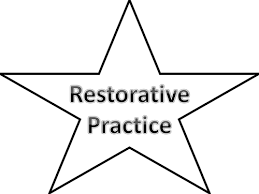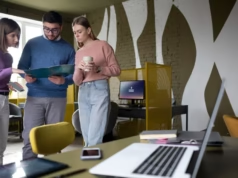Urban schools often face challenges related to trust, discipline, and communication. Students come from diverse backgrounds and carry different experiences. Traditional discipline methods like suspension or detention do not always help. They may even cause more harm.
Restorative practices focus on repairing relationships, not punishing students. They promote fairness, empathy, and personal responsibility. These methods help students feel heard and valued. In urban schools, this change leads to stronger engagement and better outcomes.
The Role of Visual Tools in Urban Education Environments
Urban school settings benefit from visual tools that reinforce learning. Many students respond well to consistent visual cues. These tools help students understand expectations and feel more secure in their environment.
Restorative practices for urban schools become more effective when supported by clear and visible guidance. The Basics of Restorative Practices Poster provides step-by-step instruction. It is easy to understand and use in classrooms, offices, and common spaces.
The poster keeps restorative values visible. It reminds students and staff of how to respond during conflict or emotional tension. The visuals also support language development and social-emotional growth, especially in schools with multilingual learners.
Structure and Purpose of the Restorative Practices Poster
The Akoben Institute created the Basics of Restorative Practices Poster to simplify the learning process. It outlines key concepts like repairing harm, building community, and promoting accountability. Its design supports both young students and adults.
This guide is used in training sessions, school meetings, and one-on-one conversations. It becomes part of the school’s daily structure. Over time, students begin to apply the steps naturally.
The poster supports consistent responses to conflict. Teachers, counselors, and administrators use the same language. This reduces confusion and builds a shared culture of care. Everyone knows what comes next, and what is expected.
Restorative practices for urban schools succeed when everyone has access to the same tools. The poster plays a central role in this process by offering visible, practical support.
Positive Impact on Student Behavior and School Culture
Restorative approaches help improve behavior. Students feel more respected and less defensive. Instead of being removed from class, they stay involved and work through problems. This keeps learning on track.
Urban schools often report high levels of suspension and dropout. Restorative practices reduce these numbers. They help students build skills to manage emotions and solve problems. The result is a calmer, more focused school environment.
The poster serves as a guide during these moments. Students can refer to it when emotions are high. Staff can use it to lead reflection. It supports communication and reminds everyone of the goal: to make things right and grow together.
These changes in behavior strengthen relationships between students and teachers. Trust increases, and students become more willing to engage in learning.
Akoben Institute’s Commitment to Urban School Success
The Akoben Institute supports schools by offering tools rooted in justice and respect. Their work centers on creating environments where every voice matters. They deliver products and training that promote clear and effective communication.
This poster is one example of how Akoben supports transformation in urban schools. It was developed with input from educators and community leaders. It reflects a deep understanding of what urban schools need to succeed.
Under the guidance of Iman Shabazz, the institute focuses on equity, empathy, and responsibility. His leadership ensures the tools provided are not only functional but culturally grounded.
The poster aligns with this mission. It is built to support both academic success and personal development in diverse, urban communities.
Practical Application in Classrooms and School Communities
Urban educators often face time constraints and high stress. They need tools that work quickly and efficiently. The Basics of Restorative Practices Poster fits this need. It is simple to implement and works across age groups.
Teachers can place it in classrooms and refer to it during lessons. School leaders can use it during conflict resolution or student conferences. Counselors can bring it into group sessions to guide conversation.
The poster also supports student independence. When young people know the steps, they start taking initiative. They begin solving problems using restorative language and thinking. This growth benefits the entire school community.
Restorative practices for urban schools thrive when students and staff share a framework. The poster builds that foundation and keeps everyone aligned.
Supporting Long-Term Change Through Restorative Visuals
Restorative practices work best when they become part of the school’s culture. Visual tools help make that happen. The poster keeps restorative steps visible every day. It reinforces training and deepens understanding over time.
Urban schools can use this tool to build consistency. When all staff and students use the same steps, the response to harm becomes fair and predictable. This builds trust and reduces fear.
The poster supports training and works well with other tools like affective questions or circle guidelines. It keeps the school focused on solutions and relationships.
Students begin to feel safer. Teachers gain confidence in their responses. Administrators see progress in school data and school climate. The poster becomes part of this success story.
Final Thoughts
Restorative practices for urban schools offer a proven way to improve behavior, strengthen relationships, and create inclusive learning environments. The Basics of Restorative Practices Poster from the Akoben Institute supports this process with clear, accessible visuals that keep restorative values front and center. With the leadership of Iman Shabazz, urban schools now have tools that work across classrooms, cultures, and communities. These tools help build a future based on fairness, responsibility, and trust.







